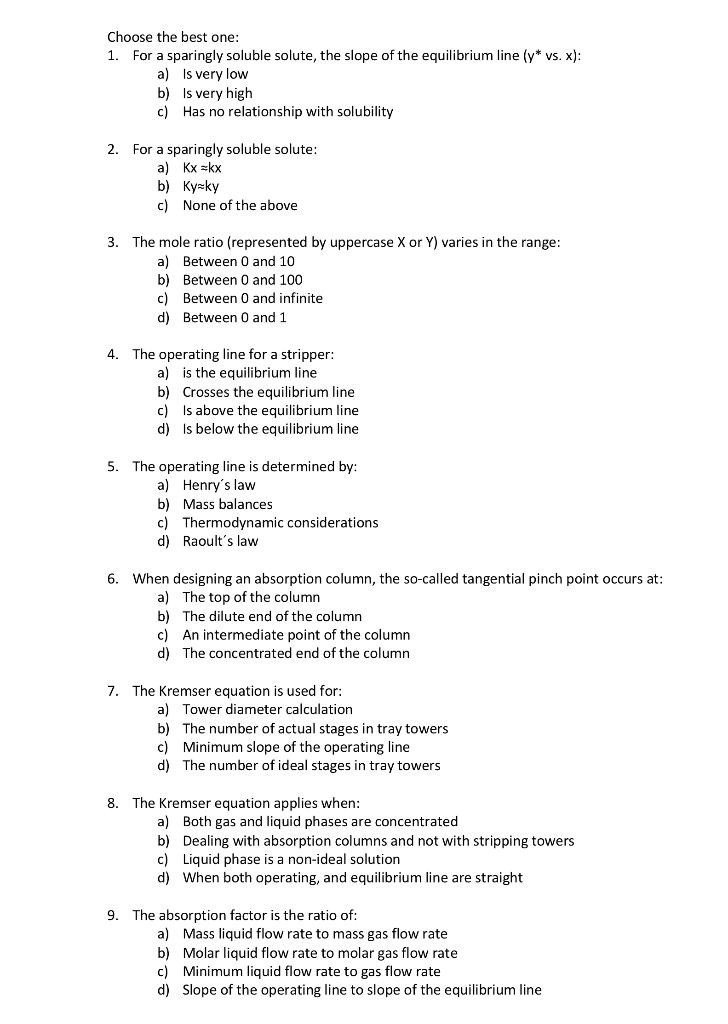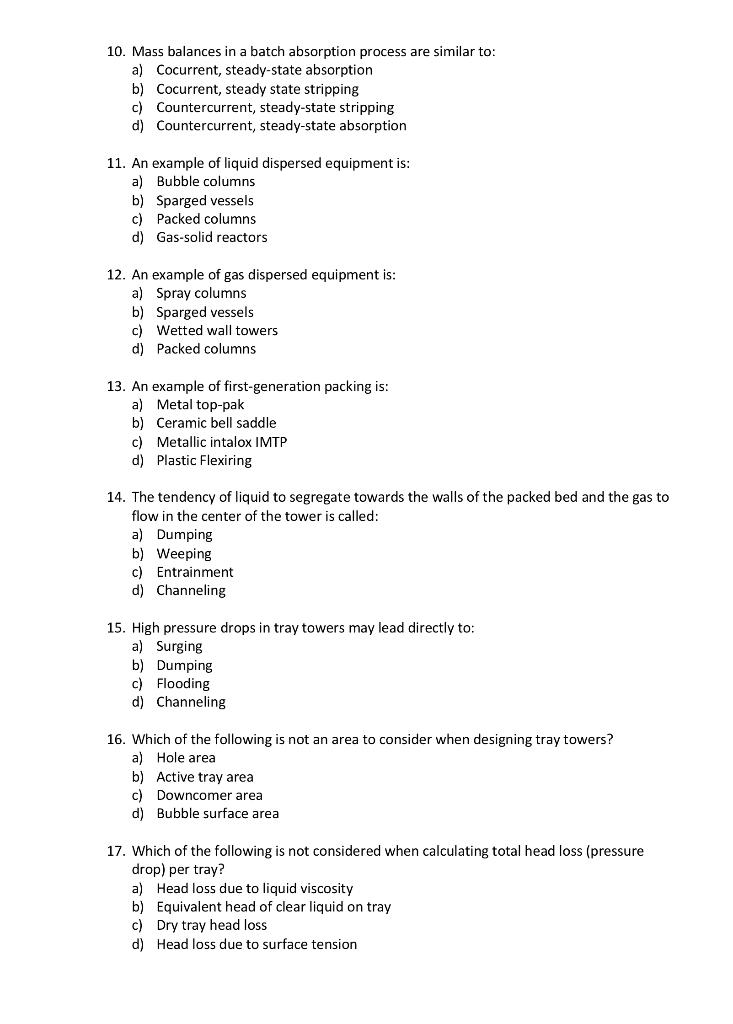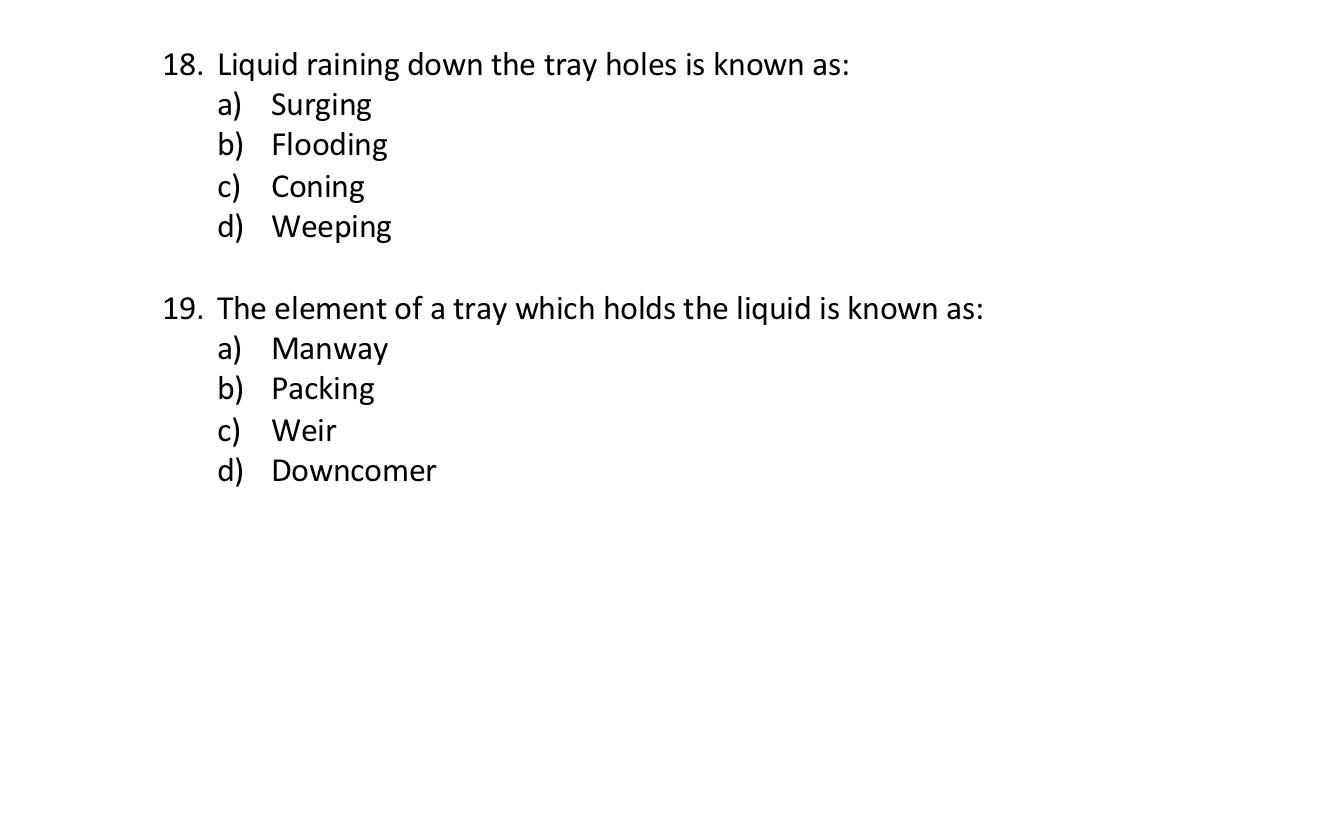


Choose the best one: 1. For a sparingly soluble solute, the slope of the equilibrium line (y* vs. x): a) is very low b) is very high c) Has no relationship with solubility 2. For a sparingly soluble solute: a) Kx=kx b) Ky=ky c) None of the above 3. The mole ratio (represented by uppercase X or Y) varies in the range: a) Between 0 and 10 b) Between 0 and 100 c) Between 0 and infinite d) Between 0 and 1 4. The operating line for a stripper: a) is the equilibrium line b) Crosses the equilibrium line c) Is above the equilibrium line d) is below the equilibrium line 5. The operating line is determined by: a) Henry's law b) Mass balances c) Thermodynamic considerations d) Raoult's law 6. When designing an absorption column, the so-called tangential pinch point occurs at: a) The top of the column b) The dilute end of the column c) An intermediate point of the column d) The concentrated end of the column 7. The Kremser equation is used for: a) Tower diameter calculation b) The number of actual stages in tray towers c) Minimum slope of the operating line d) The number of ideal stages in tray towers 8. The Kremser equation applies when: a) Both gas and liquid phases are concentrated b) Dealing with absorption columns and not with stripping towers c) Liquid phase is a non-ideal solution d) When both operating, and equilibrium line are straight 9. The absorption factor is the ratio of: a) Mass liquid flow rate to mass gas flow rate b) Molar liquid flow rate to molar gas flow rate c) Minimum liquid flow rate to gas flow rate d) Slope of the operating line to slope of the equilibrium line 10. Mass balances in a batch absorption process are similar to: a) Cocurrent, steady-state absorption b) Cocurrent, steady state stripping c) Countercurrent, steady-state stripping d) Countercurrent, steady-state absorption 11. An example of liquid dispersed equipment is: a) Bubble columns b) Sparged vessels c) Packed columns d) Gas-solid reactors 12. An example of gas dispersed equipment is: a) Spray columns b) Sparged vessels c) Wetted wall towers d) Packed columns 13. An example of first-generation packing is: a) Metal top-pak b) Ceramic bell saddle c) Metallic intalox IMTP d) Plastic Flexiring 14. The tendency of liquid to segregate towards the walls of the packed bed and the gas to flow in the center of the tower is called: a) Dumping b) Weeping c) Entrainment d) Channeling 15. High pressure drops in tray towers may lead directly to: a) Surging b) Dumping c) Flooding d) Channeling 16. Which of the following is not an area to consider when designing tray towers? a) Hole area b) Active tray area c) Downcomer area d) Bubble surface area 17. Which of the following is not considered when calculating total head loss (pressure drop) per tray? a) Head loss due to liquid viscosity b) Equivalent head of clear liquid on tray c) Dry tray head loss d) Head loss due to surface tension 18. Liquid raining down the tray holes is known as: a) Surging b) Flooding c) Coning d) Weeping 19. The element of a tray which holds the liquid is known as: a) Manway b) Packing c) Weir d) Downcomer









